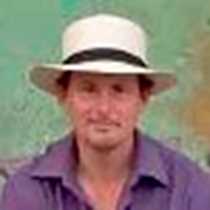Funchal, Madeira
The seas smoothed as we neared Madeira, thanks to a nice high pressure system over the islands. We steamed into Funchal, the capital, shortly after breakfast on a gloriously sunny day. The name of the town “Funchal” means “place of much fennel,” in Portuguese, but it’s bougainvillea, birds-of-paradise, flowering trees and palms – rather than herbs – that catch the eye now.
The city spills down the steep flanks of the mountains that make up the island, an attractive sprawl of red tile roofs and white stucco. Closer up, you find gardens, sun-drenched streets, and the distinctively Portuguese black-and-white pattered sidewalks made up of local volcanic rock and limestone imported from Portugal. We had plenty of opportunities to walk along them as we visited the Museum of Sacred Art, the marketplace with its colourful fruit and vegetable stalls and fishmongers, and then a stroll through the old quarter of town before lunch.
Afterwards, while some guests took the afternoon to explore the city at leisure, others set out on a hiking excursion to Ponta San Lauernzo, a rocky point at the far eastern tip of the island. Everyone gathered again at the ship, for cocktail hour, before going to dinner at a restaurant high on a hillside above Funchal. On the way up the steep and switch-backed road, climbing to more than three thousand feet above sea level, we were treated to a spectacular view of the town spread out below us and bathed in the glow of the setting sun. Dinner was classic Madeiran fare – cabbage soup and skewered beef – accompanied by Portuguese singers and folkloric dancing. We returned to the ship around eleven o’clock, coming back down the mountain road under a high, bright gibbous moon, ready for bed and the next day’s adventures.
The seas smoothed as we neared Madeira, thanks to a nice high pressure system over the islands. We steamed into Funchal, the capital, shortly after breakfast on a gloriously sunny day. The name of the town “Funchal” means “place of much fennel,” in Portuguese, but it’s bougainvillea, birds-of-paradise, flowering trees and palms – rather than herbs – that catch the eye now.
The city spills down the steep flanks of the mountains that make up the island, an attractive sprawl of red tile roofs and white stucco. Closer up, you find gardens, sun-drenched streets, and the distinctively Portuguese black-and-white pattered sidewalks made up of local volcanic rock and limestone imported from Portugal. We had plenty of opportunities to walk along them as we visited the Museum of Sacred Art, the marketplace with its colourful fruit and vegetable stalls and fishmongers, and then a stroll through the old quarter of town before lunch.
Afterwards, while some guests took the afternoon to explore the city at leisure, others set out on a hiking excursion to Ponta San Lauernzo, a rocky point at the far eastern tip of the island. Everyone gathered again at the ship, for cocktail hour, before going to dinner at a restaurant high on a hillside above Funchal. On the way up the steep and switch-backed road, climbing to more than three thousand feet above sea level, we were treated to a spectacular view of the town spread out below us and bathed in the glow of the setting sun. Dinner was classic Madeiran fare – cabbage soup and skewered beef – accompanied by Portuguese singers and folkloric dancing. We returned to the ship around eleven o’clock, coming back down the mountain road under a high, bright gibbous moon, ready for bed and the next day’s adventures.




